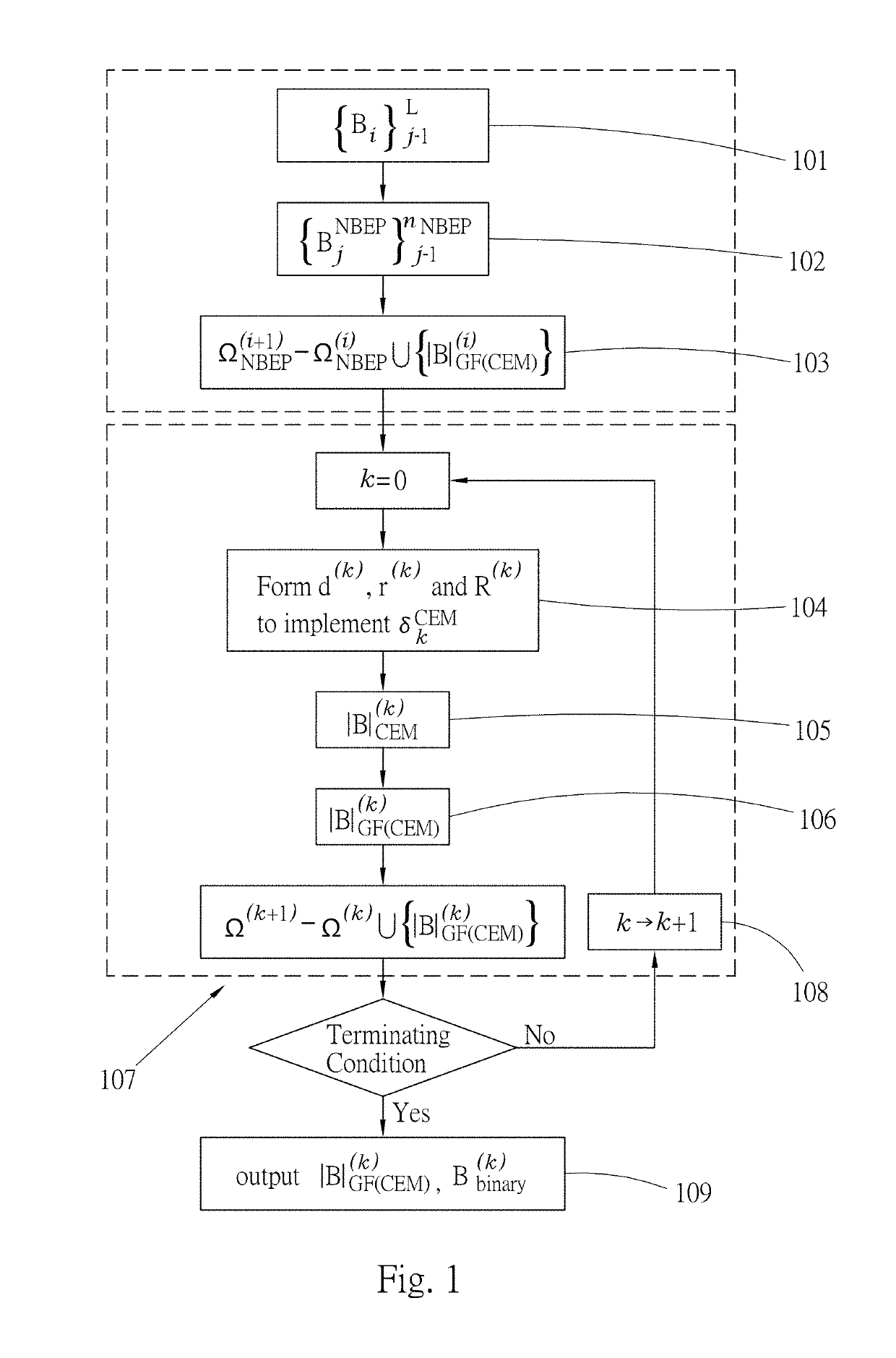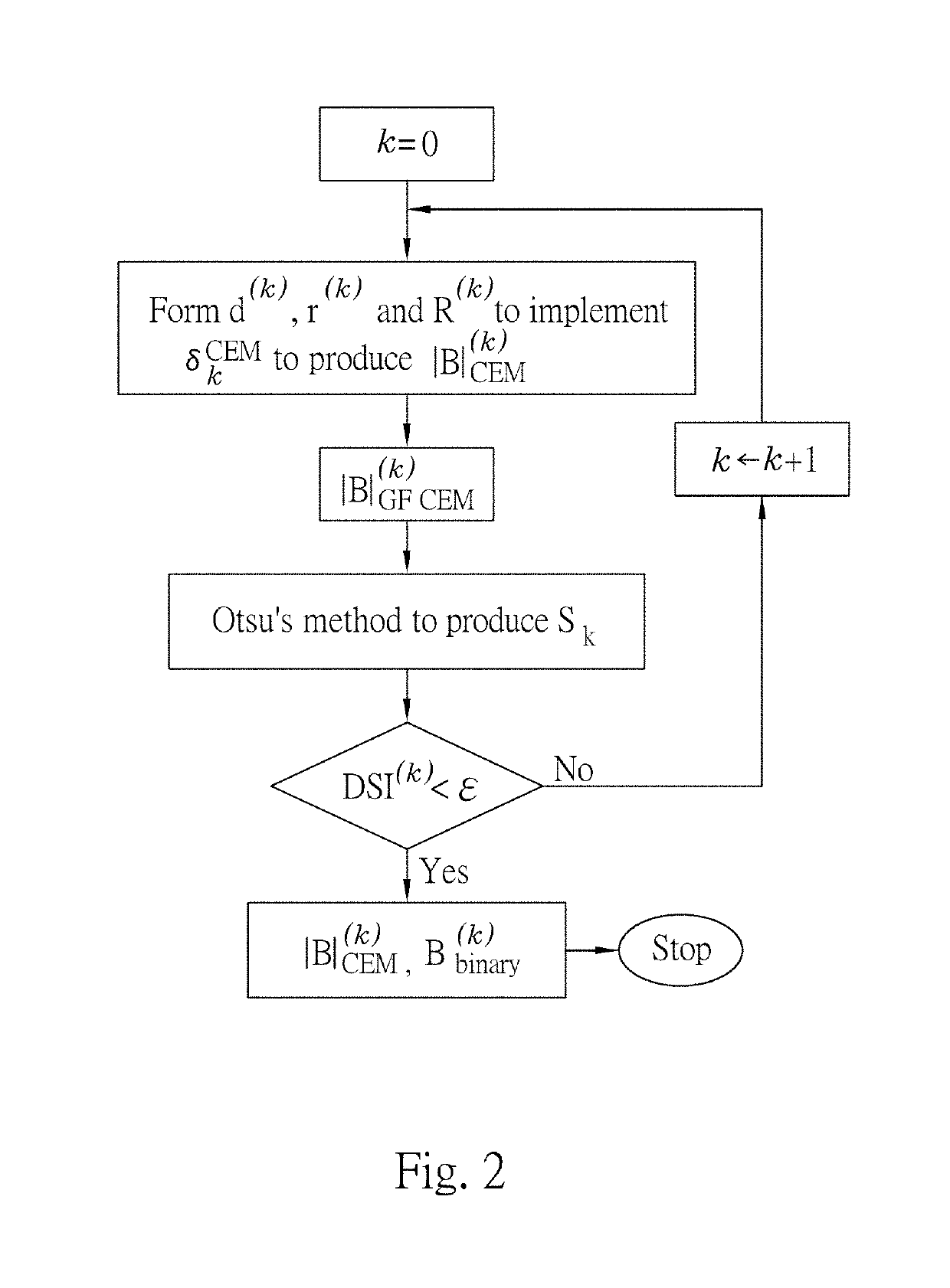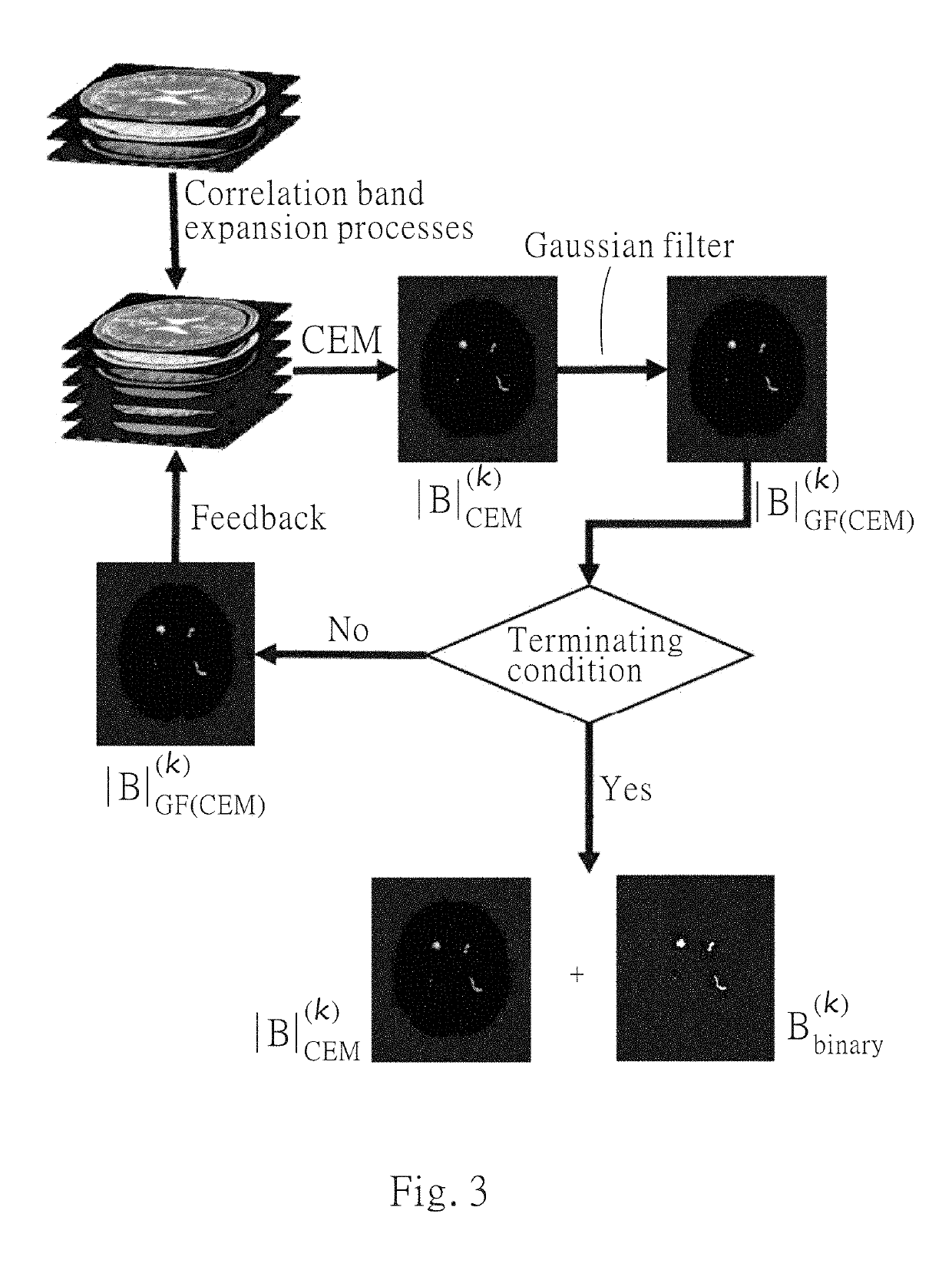Iterative analyzing method for a medical image
- Summary
- Abstract
- Description
- Claims
- Application Information
AI Technical Summary
Benefits of technology
Problems solved by technology
Method used
Image
Examples
example 1
Analyzing the Simulation Sample
[0088]MR brain images containing multiple sclerosis (MS) lesions were obtained from the MR imaging simulator of McGill University, Montreal, Canada for experiments. MS lesions are typically hyperintense on T2 or FLAIR sequence image. FIG. 4a to FIG. 4C shows a slice MR brain image along with the ground truth of MS lesion shown in FIG. 4D. The MR brain images are acquired by the modalities of T1, T2 and PD with specifications provided in BrainWeb site. The thickness of slice is 1 mm with size of 181×217×181 (pixel). Each slice is specified by INU 0% or 20%, denoted by rf0 and rf20 with 6 different levels of noise, 0%, 1%, 3%, 5%, 7% and 9%. The noise in the background of the simulated images is simulated by Rayleigh statistics and signal regions are simulated by Rician statistics, wherein the “percentage (%) of noise” represents the ratio of the standard deviation of the white Gaussian noise to the signal for a reference tissue in terms of %.
[0089]The s...
example 2
Analyzing the Real Sample
[0094]The real MRI brain images were acquired at the Taichung Veterans General Hospital (TCVGH) by Siemens Magnetom Aera 1.5 Tesla MR scanner with a 16-channel phase-array head coil. MR imaging protocol included T1 with 3D MPRAGE, T2 and FLAIR with SPACE technique. Other imaging parameters used for data acquisition were voxel size of 1×1×1 mm, matrix size of 256×256×176, and NEX=1. The protocol for this study was approved by the Ethics Committee of Clinical Research, TCVGH (IRB number: CE16138A). According to a clinical visual inspection criterion, called white matter hyperintensities (WMH), the WMH lesions can be graded by Fazekas with three grades of Fazekas shown in FIG. 11 for illustration.
[0095]The real MRI brain images were analyzed by the iterative analyzing method for a medical image of the present invention and LST, respectively, wherein the parameters used for the method of the present invention were shown in Table 3. The analysis results were show...
PUM
 Login to View More
Login to View More Abstract
Description
Claims
Application Information
 Login to View More
Login to View More - R&D
- Intellectual Property
- Life Sciences
- Materials
- Tech Scout
- Unparalleled Data Quality
- Higher Quality Content
- 60% Fewer Hallucinations
Browse by: Latest US Patents, China's latest patents, Technical Efficacy Thesaurus, Application Domain, Technology Topic, Popular Technical Reports.
© 2025 PatSnap. All rights reserved.Legal|Privacy policy|Modern Slavery Act Transparency Statement|Sitemap|About US| Contact US: help@patsnap.com



